 |
| Well its about time lets learn more about the fastcrafts plying our panay straight technically and by heart.. |
Region 6, is the most busiest shipping lane of the country; for countless centuries; illongos both here in Negros and Iloilo are known to be mariners by heart, we can't afraid to admit we illongos are a sea-loving people and travel by sea has been our biggest transport medium since the old days. today sea travel via fast ferries has been the staple of illongos since the introduction of the Malaysian fastcraft by bullet express in the 90's and catamarans in the mid 90's to the early 2000's; the fast craft has been seen as one of the biggest transport arm of illongo commuters; taking in a minimum of 50 to 100 passengers a trip its one of the largest income earners of the region not to mention its cargo freighting capability.
In the old days we can still remember the originals here are some technical descriptions of of some designs you might find familiar with:
Malaysian High Speed River ferry (Malaysian Fastcraft)
The Malaysian high speed river ferry is said to be one of the most versatile designs of high speed seagoing ferries in the world, the Malaysian river ferry can be upgraded with no necessary preemptives whatsover; it can be converted to a hydrofoil in a sinch of months by just adding foils of the surface piercing type, This crafts were originally based on the Malaysian Kumpit which were originally the staple of trading in south east Asian waters.
Malaysia deemed they should have a fastcraft and their government researched a suitable design. The choose the Malaysian riverboat as the starting point. But in Malaysia the riverboats were the old service to the rivers that once connected the hinterland to the coast.
Creating a fastcraft means shovelling two big engines and converting it for coastal cruising. Added speed has its own challenges. When the design was worked out the government shared it with the private manufacturer and gave them support. The design similarity of Malaysian FCs proceed from this.
Malaysia design might look crude compared to other designs but they are just as fast and as sturdy. Re price we do not have the figures but like counterpart design the engines are from proven makes like Mitusbishi, Yanmar, Cummins, Caterpillar. The size and length has small variances. Of course as there is no free lunch if a craft is equipped with night vision, joysticks, etc. it will cost more.
 |
| Bullet Express |
 |
| Seajet |
Catamarans
A catamaran is a type of multihulled boat or ship consisting of two hulls, or vakas, joined by some structure, the most basic being a frame, formed of akas. Catamarans can be sail- or engine-powered.
Catamarans are a relatively recent introduction to the design of boats for both leisure and sport sailing, although they have been used since time immemorial among the paravas, a fishing community in the southern coast of Tamil Nadu, India, and independently in Oceania, where Polynesian catamarans and outrigger canoes allowed seafaring Polynesians to settle the world's most far-flung islands.
In recreational sailing, catamarans, and multihulls in general, had been met by a degree of skepticism from Western sailors accustomed to more "traditional"monohull designs, mainly because multihulls were based on, to them, completely alien and strange concepts, with balance based on geometry rather than weight distribution. However, the catamaran has arguably become the best design for fast ferries, because their speed, stability and large capacity are valuable.
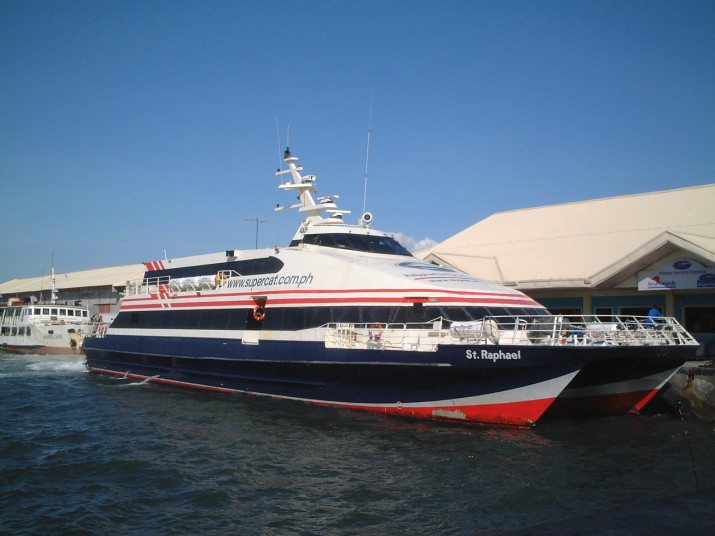 |
| Sea Angels St. Rapahel (Now Supercat 30/12) |
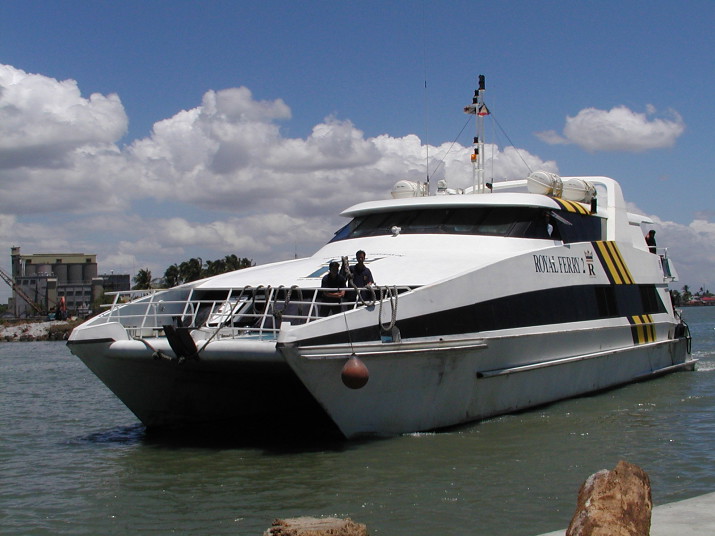 |
| Royal Ferry |
 |
| Bacolod Express |
Fast Motor Launch
Motor Launches are small vessels formerly used by countries such as japan and Hong Kong to ferry passengers at short distances, unlike other designs this vessels are higher in height and have similarities to fast yachts, some are even known to be originally motor yachts and small high speed ferry boats operating in Okinawa and Hokkaido while others are from Hong Kong.
Japan fastcrafts tend to be fast motor launches. Hongkong fastcraft design are bigger.
But all are gone as the good old days and the ones that remained are some 2 old comers and a new comer which was said to be the only one that many passengers trusted; many have been kicked out of the route due to many circumstances we can't explain one by one...
Weesam Express
Weesam Express is owned and operated by SRN Fast Seacrafts Inc. and they have a terminal which started in 2004 and is still operated very successfully in the route, time to time; SRN regularly shifts their vessels if the need arises but as so far they bring in a new vessel to take over the the one under maintenance,
Weesam is an old player and has been known by generations of illongos for their reliabilty, the company is based in Zamboanga and is owned by Mr. Wahab Amil and has similar routes such as Cebu, Leyte, Tagbilaran, weesam also has a inter-territorial route in which one of their fast crafts ply the the waters of the celebes and sulu sea connecting philippines and malaysia thru their Zamboanga-Bongao-Sandakan vice versa route
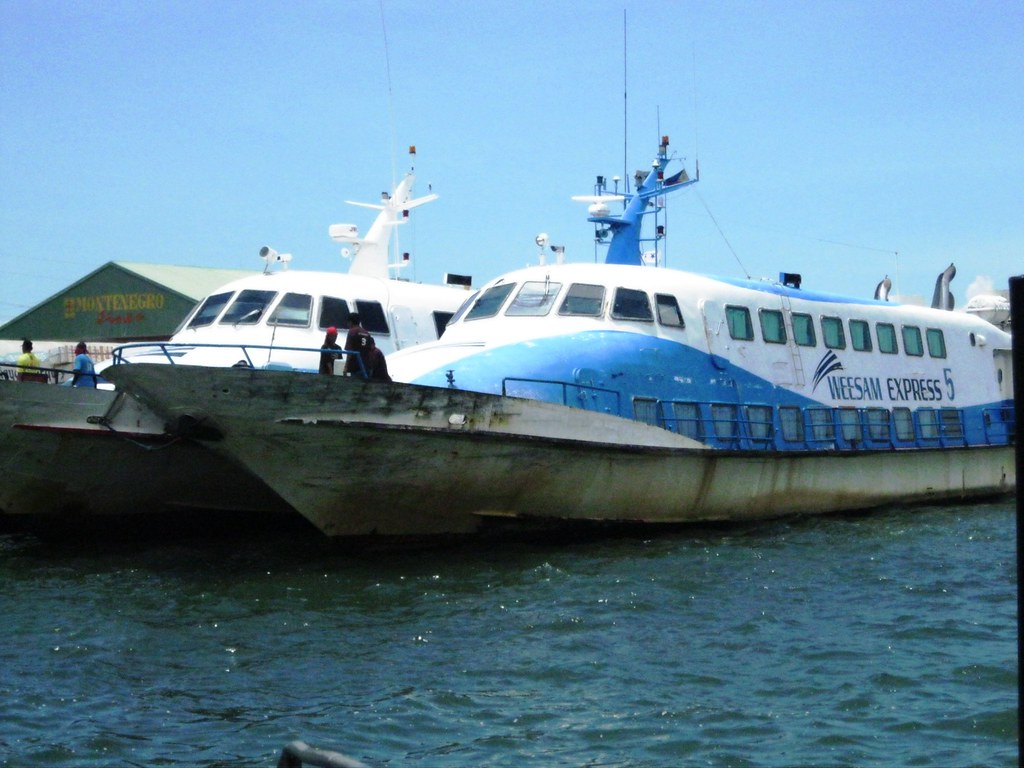 |
| Current vessels of Weesam Bacolod-iloilo route: Weesam 1 and Weesam 5 |
Weesam Express is one of the old players and has established their name thru reliablitly and good time keeping, unlike its competitors oceanjet and supercat, weesam sticks on the true crude-style mid-way passenger ferrying; like its malaysian origin, true and crude management has helped weesam get the hearts of illongo sea commuters, all the vessels operated by weesam as to date is of the 43M fully enclosed Malaysian High Speed River Ferry type, older vessels plying the route included:
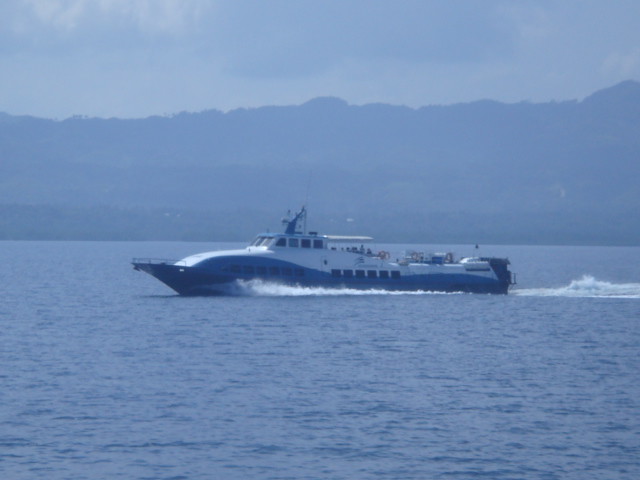 |
| The Cute Weesam 2 |
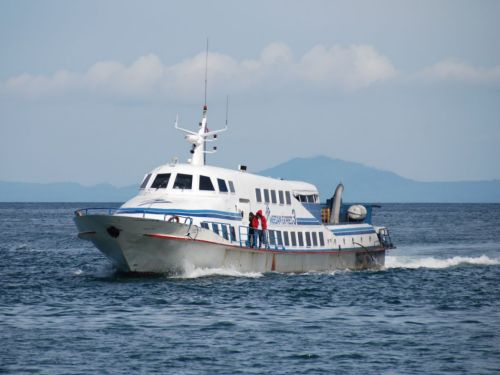 |
| The Bigger Weesam 3 |
 |
| and Weesam 6 |
Weesam Express 1
The Weesam 1 is known as the Primus Interpares and the old Lady of the Fleet; once she was the first of SRN's Fastcrafts plying the Sandakan-Bogao-Zamboanga Route she is built by Yong Choo Kui Shipyard, Sdn. Bhd. in Sibu,. Sarawak, Malaysia, originally Weesam 1 was to be Bullet Express 7; but because of some problems with bullet express's management and contract with Yong Choo Kui, the shipbuilding contract was released and the owner of SRN, Mr. Wahab Amil decided to acquire and continue building the vessel left by bullet.
The Weesam 1(W1) has a fully enclosed air-conditioned atmosphere, with 278 comfortable/reclining seats, and a canteen to cater to passenger's snack, well-trained complement to attend to the passenger's needs. it is also equipped with the latest safety and navigational implement, Weesam 1 is powered by 2 2250 HP Mitsubishi S16R-MPTK Marine Engines,and 2 Perkins 6-Cylinder Diesel Gensets supply necessary power, Weesam 1 has a cruising speed of 30 knots
one of my comrades call the Weesam 1 "10-wheeler sang kadagatan" (10-wheeler sugar hauler truck of the seas ) referring to weesam 1's Fuso-like revolution of the Mitsubishi SR engines during full ahead when embarking from the port..
because of the versatility of the Malaysian fast craft design a considerable amount of cargo can be carried on the foredeck and the vessel's prowa; the stern is occupied by the engine department, but some small in-size cargo can be carried...
because of the versatility of the Malaysian fast craft design a considerable amount of cargo can be carried on the foredeck and the vessel's prowa; the stern is occupied by the engine department, but some small in-size cargo can be carried...
Weesam Express 5
The Weesam 5 (W5) seems to be very similar to the Weesam 1 but has smaller capacity in its top accommodation she is also built by the same shipyard who built Weesam 1 by Yong Choo Kui Shipyard, Sdn. Bhd., but instead instead of having 2 x 3 x 2 First Class seats, it has only 2 x 2 x 2 seating configuration; The Weesam 5 also has a fully enclosed air-conditioned atmosphere, has 288 comfortable reclining seats, equipped with the latest safety and navigational implements, well-trained complement to serve the needs of the passengers, a canteen to cater to the snacks of passengers, orignally, Weesam 5 is powered by 2 2400 HP Caterpillar 3516-DITA Marine Engines later after several problems with the CAT 3516's the weesam 5 was re-powered with 2 2400 HP Cummins KTA-50M Tier-2 Marine Engines and power is supplied by 2 cummins 6BTA-M Marine Gensets, the Weesam 5 has a cruising speed of 30 knots
technical details:
I will not broaden technical details of the fleet but here are some pics to give you and idea of the ship's heart
 |
 |
| The Weesam 1 is powered by 2 Mitsubishi S16R-MPTK Engines Similar to this model |
 |
| Most weesams are now powered by Cummins Marine Series of Engines same goes to the W5. |
 |
| Other vessels of Weesam are powered by Caterpillar 3516 DITA Marine Engines |
 |
| Most weesams have very simple navigation and control systems, robust, reliable and simple; upgrades can be possible but it means they will have to increase the fare rate to do this. |
Supercat
The Supercat Fast Ferry Corporation (Supercat) is a shipping company that operates a fleet of High Speed Catamarans (HSC) in the Philippines. Supercat is part of the integrated transport and logistics service arm of Aboitiz & Company (ACO), which is fully owned by the Aboitiz Equity Ventures (AEV) . Supercat is the sister company of Super Ferry & Cebu Ferries . Supercat is currently operating 7 vessels in 7 ports around the Philippines.
For those who want to get more out of their money here's supercat for you; yes! it boasts of comfort, safety, reliability but at a very hefty price in your pocket; many who prefer supercat are illongo elites who can't even try to board a weesam or just for some bacolod feelers who can't do anything but flirt with panay studs..
eons ago supercat pulled out of the panay strait route because of the rising price of marine diesel fuel which affected even other fastcraft operators, for the time being it was weesam and former companies such as seajet and bacolod express.
supercat resumed the bacolod route last 2007 but had some technical problems with their vessels but this didn't stop them from continuing to operate in the iloilo-bacolod route, it seems its only "by the brands name" (because its under the ATS) flagship many "sosy" illongos patronize the supercat.
Current Vessels
Supercat 36
 |
| Photo Courtesy of MCGutib via Flickr |
Supercat 22
Supercat 22 is formerly M/V Mt. Samat Ferry 3, which was operated by defunct Philippine fast ferry company, Mt. Samat. The Supercat 22 was built by FBMA Marine Inc. (an Aboitiz Company) in Balamban, Cebu. This vessel uses a simple propulsion system, and is very fuel efficient. In July 2010, she was added a second deck.
Technical details
Most Vessels of Supercat are powered by Modern, state-of -the art European engines such as MTU and Deutz MWM;
 |
| Check out the Pods and call me Thery! those controls kind of look like throttle for the Kamewa waterjets |
Oceanjet
Oceanjet is a ferry franchise operated by Ocean Fast Ferries, Inc. (OFFI), a domestic shipping company based in Cebu City and operates several fast ferries in Central Visayas.
Oceanjet is a new comer and has only operated for almost 5 years, oceanjet has very standard to need-improvement; known as the "madlang people's fastcraft" oceanjet is selling fare much cheaper than weesam but most roundtrip tickets they offer expire in a matter of days, many complain that oceanjet's vessels are poor-equipped and are not that fully maintained, well it seems the management of oceanjet here in bacolod just fully concentrated in their terminal instead of their vessels; call it cheap thrills and happy ride!
former vessels
Oceanjet 7
former vessels
 |
| Oceanjet 1 |
Current Vessels
Oceanjet 2
Oceanjet 2(OJ2) is another small vessel of Oceanfast ferries which operates in region 6, unlike other oceanjets she is small and taller which makes her more prone to wave impact, the oceanjet 2 is powered by Yanmar Engines, its got some kind of ubsurd horn which when it sounds like a screeching cow or sometimes a laser gun..
 |
| Seems to be the former look of the oceanjet 2, |
The oceanjet 2 seems to be the former olive line fast ferry which was plying a fastcraft sea route connecting islands around Okinawa, the latter oceanjet mostly acquired surplus japanese fastcrafts similar to the oceanjet 1.
Oceanjet 7
The oceanjet 7(OJ7) is unique among all the crafts plying the panay strait, but the latter it seems to be the oldest, the OJ7 is formerly one of the W8-Series of Westamarans from Norway and the OJ7 seems to be very old but capable; many complain its always needs some upgrade but because the company is still starting up in the route, they don't have enough resources to upgrade even the Oceanjet 7. you will also notice the crew even put up a wooden plank ladder behind the stern side of the superstructure to serve as an access to climb up to the bridge..
 |
| a true proof oceanjet 7 is old is the pictures of her sister vessels around the net, this pic dates back to 1973.. |
On the Bergen to Stavanger route, there was already a high speed service by hydrofoil, introduced early in the 1960s.
The initial Westamaran models were somewhat slower than the hydrofoils, but passenger comfort, both in terms of spaciousness but especially foul weather handling, was better in the Westamanarans, so they were better liked by the public.
The Westamaran had asymmetrical hulls, where the insides was essentially flat, forming a tunnel between the hulls that were rectangular in shape. The profiles were in fact quite like a Storm class torpedo boat cut in two, and the construction of the Westamaran built heavily on the experience gained from the Storm class.
The Oceanjet 7 like all Westamarans are powered by 2 MTU Series 396 Diesel engines and necessary electrical power is provided by 2 Mercedes OM314 Diesel Generators.
Technical Details
 |
| Oceanjet 2 is powered by Yanmar LAK Series of Marine Engines. |
 |
| Oceanjet 7 is powered by 2 MTU series 396 Marine Engines |
well that's it for now! hope you had more info on some of the fastcrafts plying our waters..


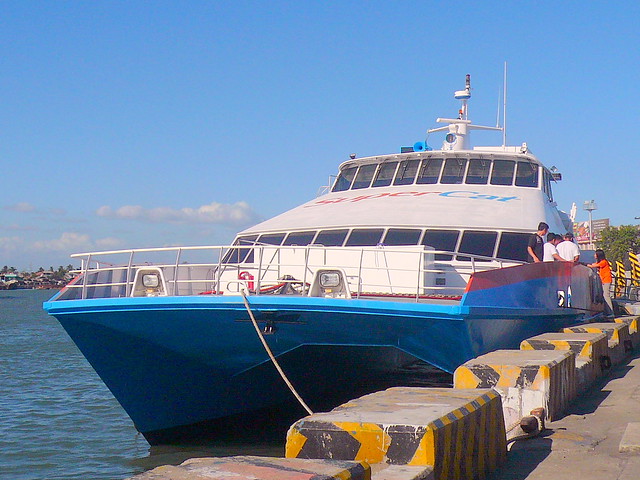

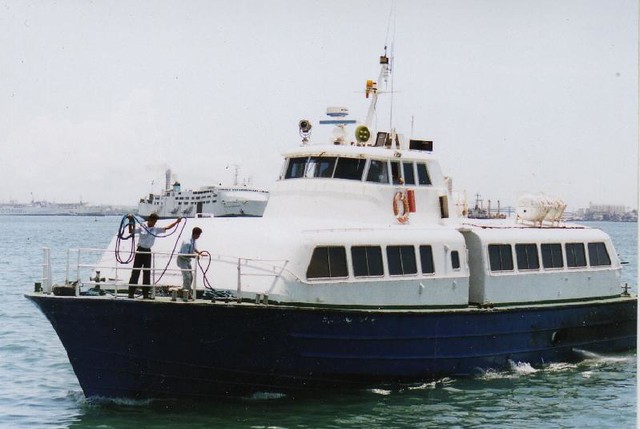
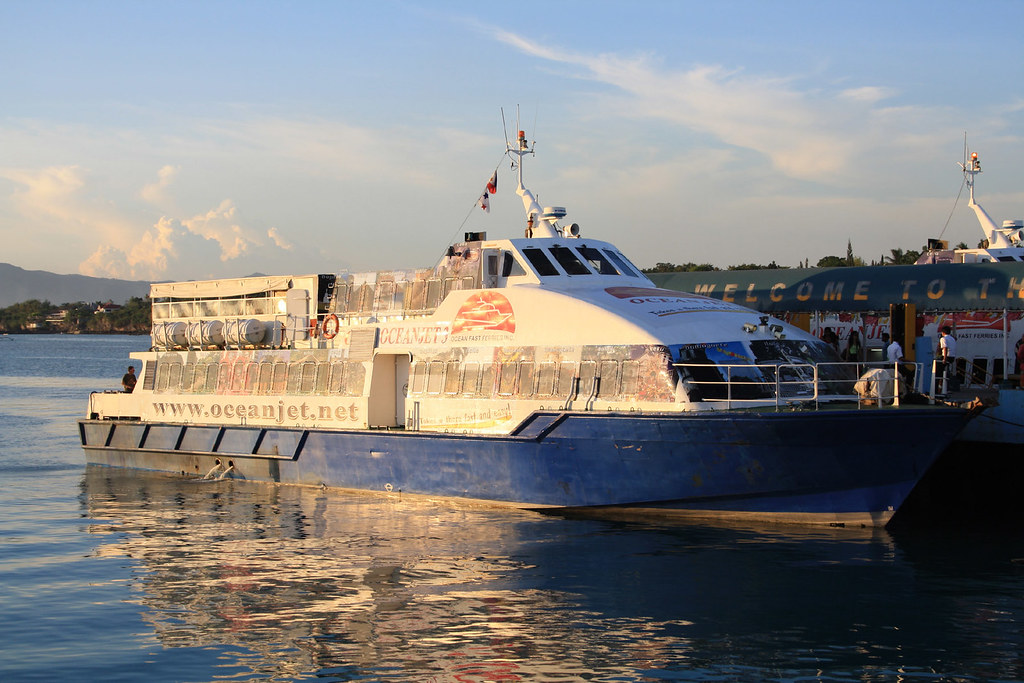
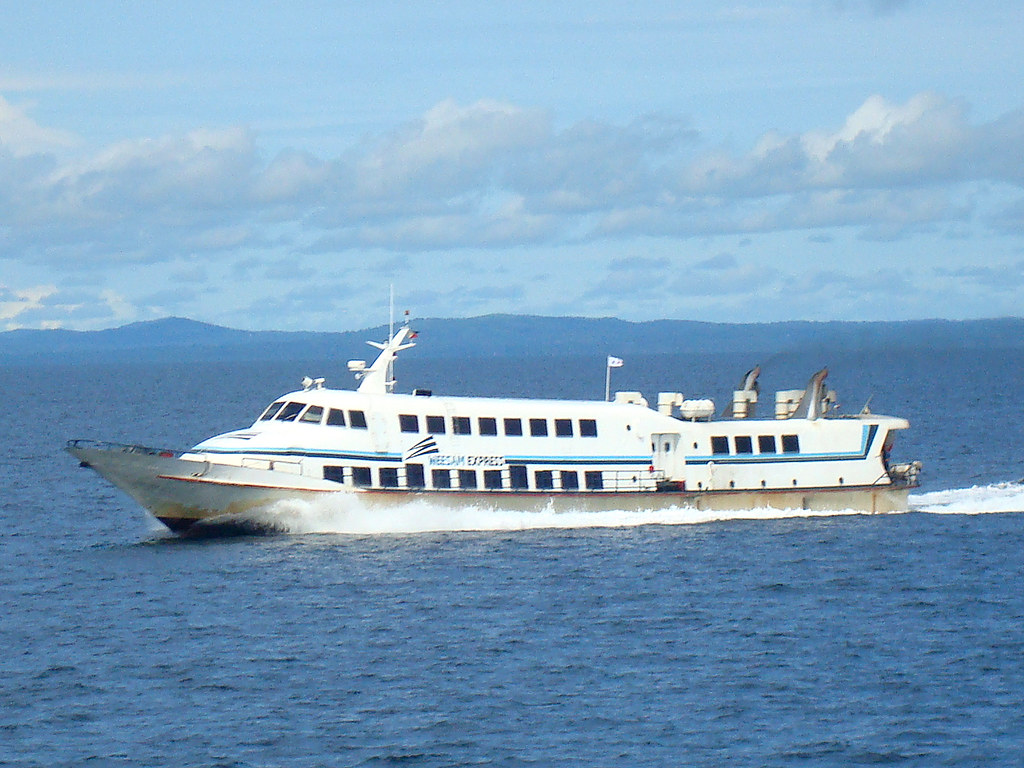






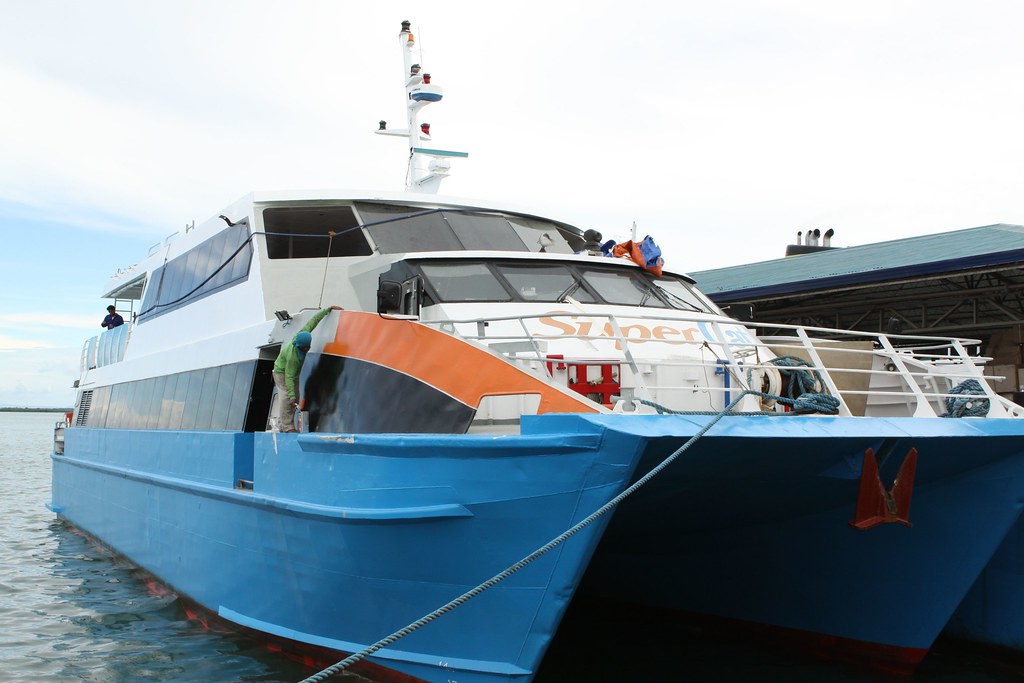


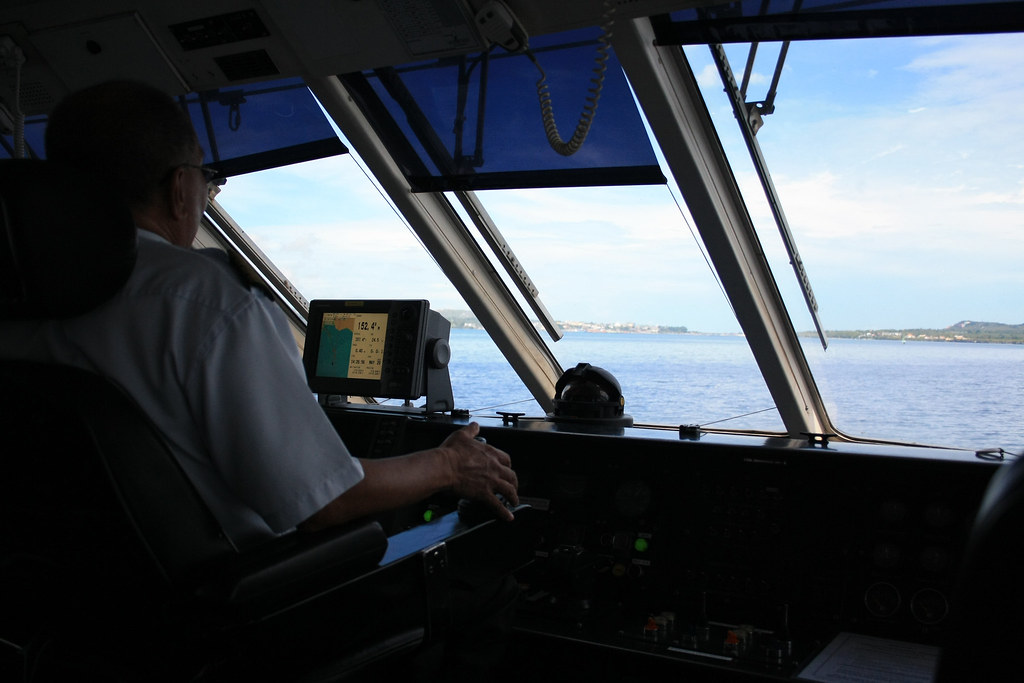

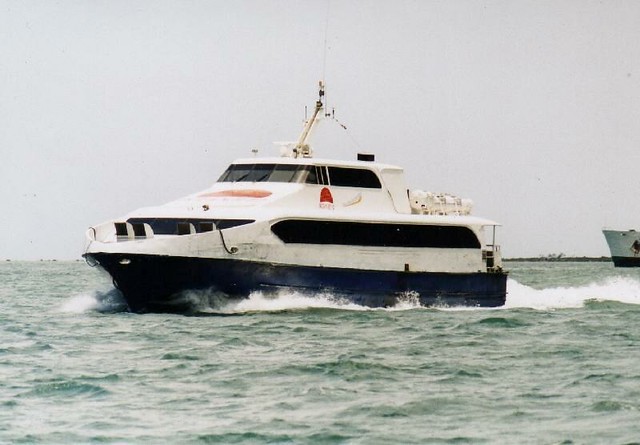

No comments:
Post a Comment